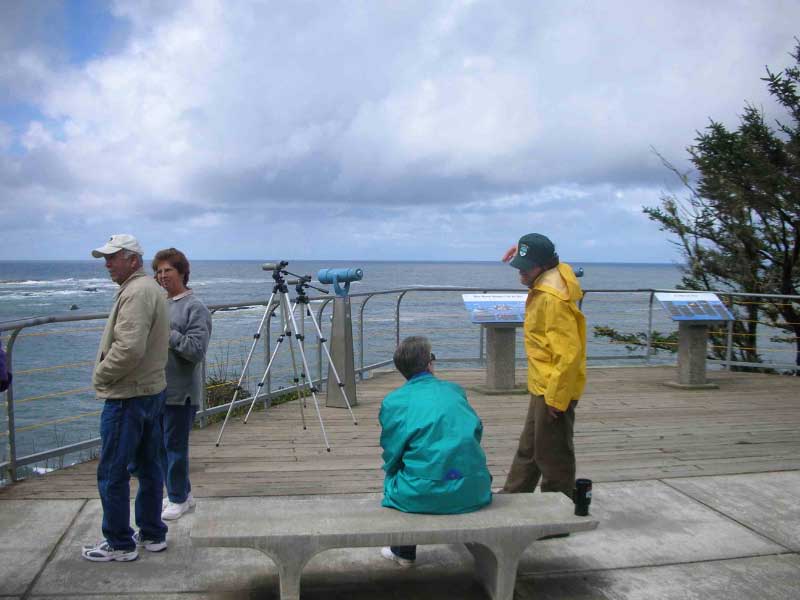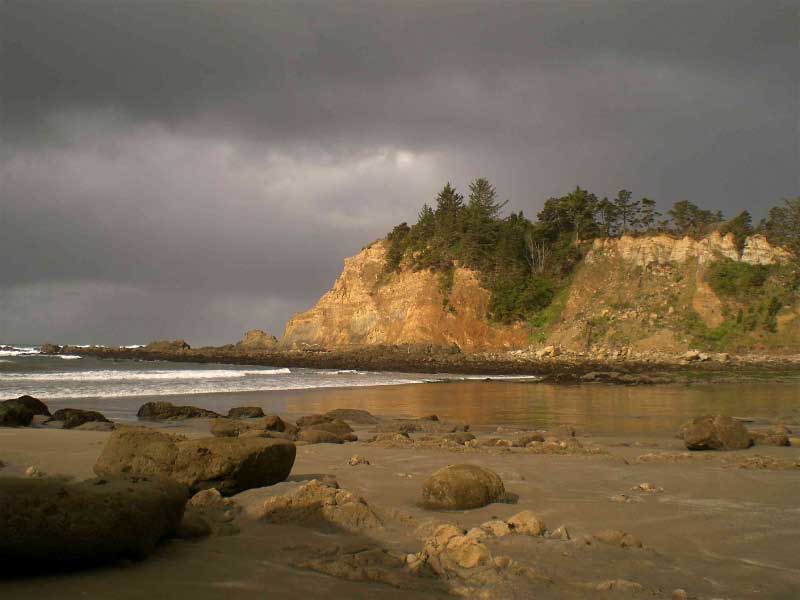|
LOCATIONS
 USGS Cape Arago Quadrangle 1973 USGS Cape Arago Quadrangle 1973
SIMPSON'S REEF
This scenic overlook provides visitors with an extraordinary view of our local seal and sea lion populations, as well as the occasional grey whale. Conveniently located off Oregon’s Cape Arago Highway, visitors need only get out of their cars to catch this unique glimpse of amazing marine mammals. While there are informative posters and signs at this site, we provided enthusiastic verbal interpretation for visitors.

Our role as environmental interpreters at Simpson’s Reef was consistent with the awareness to action objectives of environmental education. While the state parks in which we worked have well developed informational signs, a significant need exists for more personal interaction. During the first few weeks of the term we became familiar with the marine life that can be seen from this viewpoint. Equipped with OIMB telescopes, we worked in pairs once a week throughout the term at Simpson’s Reef.
The interactions we had led us to believe our role at Simpson’s Reef was beneficial. The hours we spent at the overlook flew by as we interacted with a continual flow of visitors. The overlook is an ideal location to share interesting information about this marine ecosystem, and we greatly enjoyed conversations with a diverse population of visitors.
Back to Top
CAPE ARAGO: SOUTH COVE
South Cove at Cape Arago is an ideal tidepooling location with rich intertidal flora and fauna. From the trailhead visitors descend through old growth forest to a beautiful and protected cove. Lower tides present endless opportunities for exploration of this rocky intertidal ecosystem.

Our role at South Cove was to meet with visiting families and school groups, explain tidepool safety and etiquette, and help find and identify the diversity of life within the ecosystem. Spring is the most popular season for field trips from local schools; some visiting from as far away as Montana. Most schools arrive unannounced without a planned activity to offer their students. Over the course of the term we interacted with close to one thousand students in the tidepools. In addition, we compiled a list of school contacts that expressed interest in a Marine Team assisting them with field trips. Future Marine Teams will be able to contact these schools in advance, and have a planned science or exploratory field trip ready for them when they arrive at South Cove.
After having rich experiences and conversations with various teachers from Northwest schools, it became apparent to us that our presence was greatly appreciated. This term proved to be a great first step in the creation of a more solid environmental education program at South Cove.
Back to Top
|

